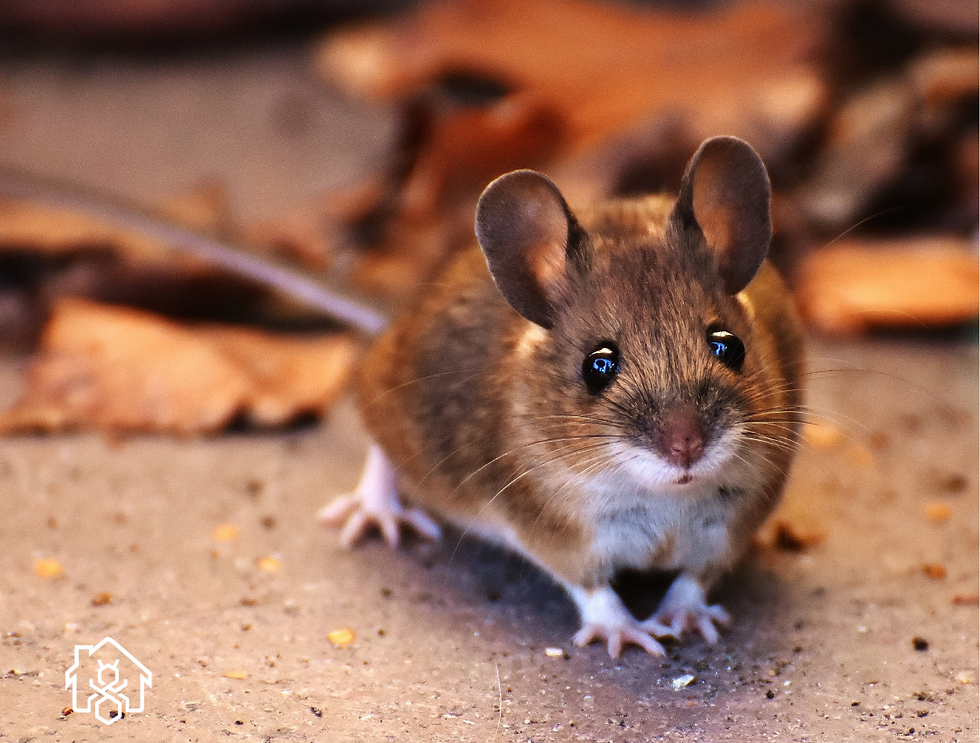Preparing for Fall Pests: WHY FALL INFESTATIONS ARE DIFFERENT
- Bryan Vaughan

- Sep 16
- 4 min read
Updated: Sep 18
As the weather cools and the leaves start to change, pests don’t just disappear — they shift gears. Fall is prime time for many insects and rodents to move indoors looking for warmth, food, and shelter. If you’re in Virginia or North Carolina, you’ll notice the pattern every year: summer mosquitoes fade, but stink bugs, rodents, spiders, and ants start knocking at your door (literally). Knowing what’s coming — and how to prevent it — can save you headaches (and costly infestations) this season.
The Usual Suspects: Common Fall Pests in VA & NC

Rodents (Mice & Rats):Rodents are perhaps the most notorious fall invaders. As natural foragers, they look for food sources indoors when outdoor supplies dwindle. Mice can squeeze through a gap the size of a dime, while rats need only a quarter-sized opening. Once inside, they reproduce quickly and can spread diseases, contaminate food, and chew through wiring and insulation.
Stink Bugs: The brown marmorated stink bug is especially common in Virginia and North Carolina. As temperatures fall, these insects gather in large numbers on sunny walls, siding, and windows before sneaking inside through cracks and vents. While they don’t bite or damage property, they emit a foul odor when squashed and can be a major nuisance indoors.
Spiders: Many homeowners notice more spiders in the fall. This isn’t because there are more spiders, but because they’re more visible as they seek mates or follow prey indoors. While most species are harmless, venomous ones like black widows or brown recluses can sometimes be found in sheds, garages, or basements.
Cockroaches: Cockroaches thrive in warm, moist environments, and fall often drives them from outdoor habitats into kitchens, bathrooms, and basements. They spread bacteria, trigger allergies, and can worsen asthma, especially in children.
Ants: Certain species, such as odorous house ants, increase activity in the fall as they gather food reserves for winter. They can establish satellite colonies indoors, particularly in kitchens and behind walls, where they’re difficult to eliminate without professional treatment.
Cluster Flies & Lady Beetles: These overwintering insects often gather on the sunny sides of homes in late fall. While not harmful, they slip into attics, window frames, and wall voids, emerging on warm winter days to buzz around the house.
Why Fall Infestations Are Different

Fall pest activity is not the same as summer swarms or spring breeding cycles. In autumn, pests are focused on survival, which makes them more determined to get inside.
Seasonal Behavior: Pests actively seek warmth and food sources in preparation for winter, making them persistent invaders.
Entry Points Multiply: Weather changes can cause shifting in home structures — gaps in siding, worn weather-stripping, and unsealed vents all become highways for pests.
Structural Nesting: Rodents, in particular, don’t just sneak in — they build nests in insulation, chew electrical wiring, and even damage vehicles stored in garages.
Unlike summer pests that stay mostly outdoors, fall invaders make themselves at home inside your walls, attic, or kitchen. That’s why prevention now saves bigger problems later.
How to Get Ahead: Proactive Prevention Tips
Preparing for Fall Pests

Seal Entry Points: Carefully inspect your home’s exterior. Caulk around windows, replace worn weather-stripping, repair torn screens, and install door sweeps. Don’t forget to check utility line gaps and dryer vents.
Declutter & Clean: Pests thrive in hidden, undisturbed spaces. Rake up leaf piles, move firewood away from siding, and keep garage or shed clutter to a minimum. Indoors, deep-clean pantries and make sure pet food isn’t left out overnight.
Inspect Your Attic & Crawl Space: These are hotspots for rodents and insects because they’re dark, quiet, and rarely disturbed. Check for droppings, chewed materials, or insect clusters. Installing vapor barriers and keeping humidity low also discourages pests.
Proper Food Storage: Use airtight containers for grains, cereals, and snacks. Even a small spill can attract ants or roaches. Regularly clean behind appliances and keep trash in sealed bins.
Outdoor Prep: Trim shrubs and branches at least a foot away from your home’s exterior. Clear gutters to prevent moisture buildup that attracts pests. Keep grass trimmed low around the foundation to reduce rodent harborage areas.
When to Call VACO Pest Management

Thorough Inspections: Identifying not only pests but also the conditions that attract them.
Targeted Treatments: Using products and methods that are safe for families and pets while effective against pests.
Long-Term Prevention: Routine maintenance plans that keep homes protected through every season.
Peace of Mind: Knowing your home is protected from hidden damage and health risks.
Fall is a season for enjoying cooler air, football games, and pumpkin spice — not chasing stink bugs around your living room or worrying about scratching sounds in the attic. By understanding the pests most active this time of year and taking steps to prevent them, you can enjoy autumn stress-free. And when prevention isn’t enough, partnering with our trusted company, VACO Pest Management, ensures your home stays comfortable, safe, and pest-free. Contact us!
_edited.jpg)



Comments